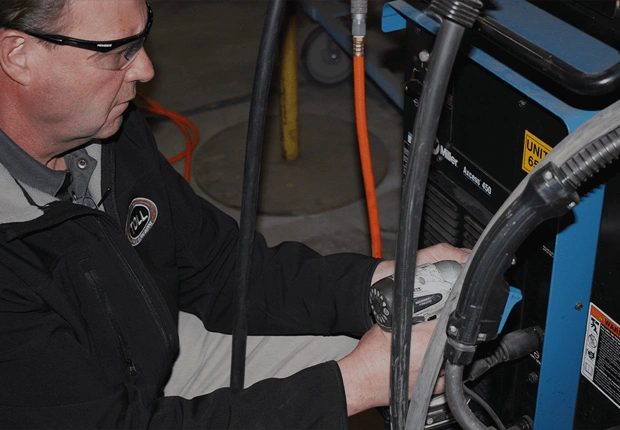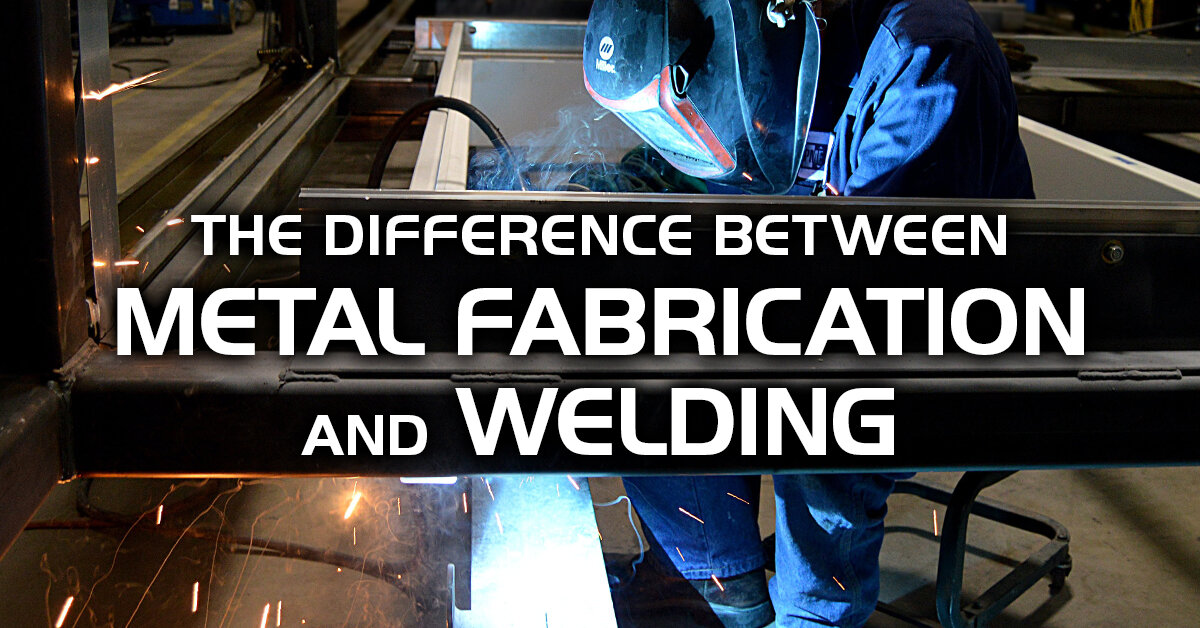A detailed look at welding penetration issues and Montana Mobile Welding and Repair Belgrade’s fixes
Everything about Welding: Key Insights Into Techniques and Ideal Practices for Success
Welding includes a variety of strategies, each suited for particular materials and applications. Recognizing these methods, such as GMAW, SMAW, and TIG, is necessary for achieving perfect outcomes. The appropriate equipment and safety practices can not be neglected. As prep work and repairing play critical roles in the welding procedure, mastering these components can significantly improve the top quality of the end product. What are the key elements that guarantee a successful weld?
Comprehending Various Welding Strategies
Welding techniques include a selection of methods, each matched to details applications and products. Among one of the most common techniques are Gas Metal Arc Welding (GMAW), Shielded Steel Arc Welding (SMAW), and Tungsten Inert Gas Welding (TIG) GMAW, also known as MIG welding, is preferred for its speed and flexibility, making it optimal for thin products. SMAW, or stick welding, is preferred for its simpleness and effectiveness in outdoor environments, particularly with thicker metals. TIG welding offers accuracy and control, making it appropriate for elaborate job and non-ferrous metals (Montana Mobile Welding and Repair). Each technique has its special advantages and factors to consider, enabling welders to choose the most effective approach based on the project's needs, product type, and wanted outcomes. Recognizing these methods is important for effective welding
Important Welding Tools and Tools
While various welding strategies need particular skills, the ideal devices and tools are equally vital for attaining top quality results. Necessary welding tools includes welding makers, which vary relying on the method-- such as MIG, TIG, or stick welding. Protective equipment, including helmets, gloves, and aprons, guarantees safety and comfort throughout the procedure. Additionally, fixtures and clamps aid secure materials in area, guaranteeing accuracy in welds. Consumables like welding poles, cable, and protecting gas are additionally important parts that affect the top quality of the weld. Tools such as cutters and mills promote surface area prep work and post-weld ending up, adding to a specialist end result. Investing in top notch equipment inevitably enhances the performance and effectiveness of welding jobs.
Security Practices in Welding
Proper safety and security techniques are crucial in the welding sector to safeguard workers from possible dangers. Welders should put on proper personal safety devices (PPE), including headgears with appropriate shading, handwear covers, and flame-resistant clothes. Sufficient air flow is essential to lower exposure to hazardous fumes and gases produced during the welding procedure. Additionally, employees ought to be learnt the correct handling of welding equipment to prevent crashes. Fire safety and security steps, such as maintaining combustible materials far from the welding location and having fire extinguishers readily offered, are needed. Routine examinations of equipment and offices can aid determine possible risks prior to they result in crashes. By adhering to these security practices, welders can produce a safer working environment and reduce threats associated with their profession.
Readying Materials for Welding
Preparing materials for welding is a vital step that substantially affects the top quality and honesty of the final item (Belgrade Fabrication). Proper preparation involves cleaning the surfaces to remove pollutants such as oil, dust, and rust, which can endanger the weld. Strategies such as grinding, sanding, or using solvents are typically utilized to achieve a clean surface area. Furthermore, making sure that the products mesh comfortably is vital; spaces can cause weak welds. It's additionally crucial to consider the alignment and positioning of the components, as this will certainly affect the convenience of welding and the last result. Finally, picking the suitable filler product and guaranteeing compatibility with the base metals is important for attaining solid, durable welds
Tips for Achieving High-Quality Welds
Attaining top quality welds calls for focus to detail and adherence to finest methods throughout the welding process. Appropriate joint prep work is necessary, making sure surface areas are complimentary and clean from pollutants. Selecting the suitable filler product and welding strategy based upon the base metals is crucial for ideal bonding. Maintaining constant traveling speed and angle while welding can prevent flaws and advertise harmony. In addition, controlling warmth input is essential; extreme warmth can lead to bending and compromised joints. If essential, frequently evaluating the welds during the procedure permits for instant adjustments. Utilizing ideal post-weld therapies, such as cleansing and stress and anxiety relief, can improve the durability and stability of the weld, inevitably making certain a successful outcome.
Troubleshooting Typical Welding Issues
Welding often presents challenges that can affect the quality and integrity of the end product. Common issues such as porosity, irregular weld grains, and getting too hot can arise, each needing particular troubleshooting techniques. Comprehending these problems welder fabricator is necessary for welders to enhance their skills and achieve optimal results.
Porosity Problems Described
Porosity can typically be neglected, it stays a vital problem in welding that can compromise the integrity of a completed aluminum welding shops near me item. Porosity describes the visibility of tiny gas pockets within the weld bead, which can damage the joint and lead to premature failure. This trouble generally arises from impurities, wetness, or inappropriate shielding gas protection throughout the welding process. To alleviate porosity, welders must validate that the base products are completely dry and clean, utilize ideal shielding gases, and keep regular welding parameters. Regularly checking the devices and setting can likewise help recognize prospective issues before they materialize in the weld. Resolving porosity properly is crucial for attaining solid, sturdy welds that meet top quality standards.

Inconsistent Weld Beans
Inconsistent weld beads can substantially influence the quality and toughness of a finished product. Different aspects add to this concern, consisting of inappropriate travel speed, incorrect amperage settings, and inconsistent electrode angles. When the welder relocates as well rapidly, a bead may appear narrow and do not have penetration, while moving as well gradually can trigger excessive build-up. In addition, utilizing the wrong amperage can cause either damaging or excessive spatter, both of which concession weld stability. The welder's strategy, such as irregular torch activity, can likewise bring about uneven grain look. To mitigate these issues, welders ought to focus on preserving constant, regulated activities and ensuring appropriate equipment settings to achieve uniformity in their welds. Consistency is key to accomplishing strong and trusted welds.
Getting Too Hot and Warping Issues
Too much warm during the welding process can cause considerable getting too hot and buckling problems, impacting the architectural stability of the work surface. These troubles often manifest as distortion, which can compromise positioning and fit-up, making more assembly challenging. technoweld Variables adding to overheating consist of the choice of welding criteria, such as voltage and travel speed, as well as the sort of product being welded. To mitigate these concerns, welders ought to maintain constant traveling speed and appropriate warm input while keeping an eye on the workpiece temperature. Furthermore, preheating or post-weld heat therapy can help ease anxieties triggered by quick air conditioning - Montana Mobile Welding and Repair Belgrade Fabrication. Routine inspection and adherence to ideal methods are crucial in avoiding getting too hot and guaranteeing the longevity and reliability of welded frameworks
Often Asked Questions
What Are the Job Opportunities in the Welding Market?
The welding market offers varied occupation opportunities, including positions as welders, inspectors, teachers, and engineers. Professionals can operate in production, building and construction, aerospace, and auto fields, gaining from strong need and competitive incomes in various duties.
Just How Can I Improve My Welding Rate Without Compromising Quality?
To improve welding speed without compromising top quality, one need to exercise effective methods, keep devices, maximize setups, and improve hand-eye control. Routine training and seeking feedback can also substantially contribute to attaining quicker, top notch welds.
What Certifications Are Available for Welders?
Numerous certifications exist for welders, consisting of those from the American Welding Society (AWS), the National Center for Building And Construction Education And Learning and Study (NCCER), and numerous industry-specific organizations. These qualifications boost employability and demonstrate ability effectiveness.
Just How Does Welding Impact the Residences of Metals?
Welding affects the residential properties of steels by modifying their microstructure, which can result in modifications in hardness, ductility, and stamina. Warm input and cooling rates during the process substantially affect these material characteristics.
Can I Bonded Dissimilar Metals With Each Other?
